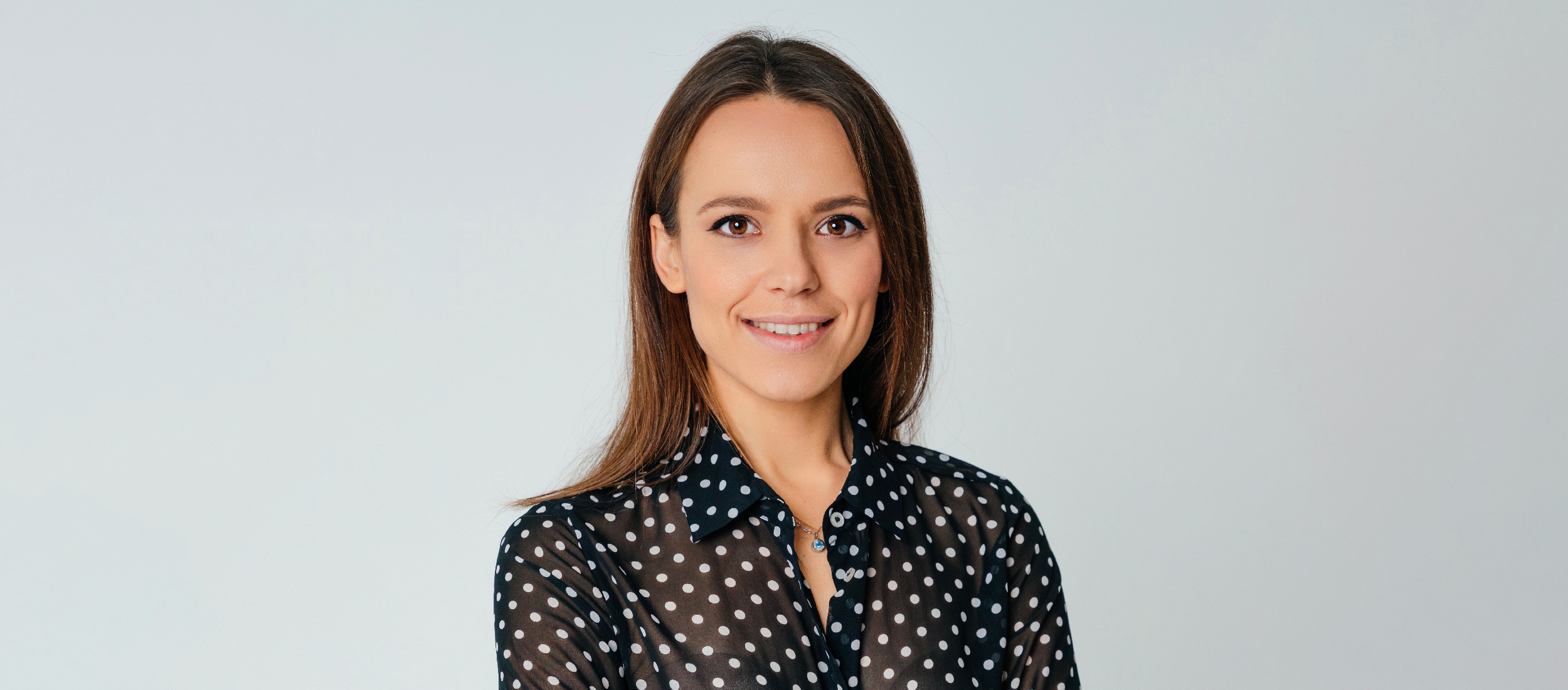
Digital Strategies and Business Transformation: A Meeting with Anastasia Leshchenko
3 May 2024Anastasia Leshchenko, a lecturer for the Digital Strategy course in the Professional Master in Digital Marketing and Communication at BBS, shares her unique perspective on integrating digital and social dynamics in higher education. With a remarkable career as the founder of Spazi Belli and significant experience in the digital sector, Anastasia brings a rich and practical outlook on the changes necessary to lead companies through their transformation. In this interview, she explores the importance of social strategies, the impact of authenticity in digital marketing, and the essential advice for future industry leaders.
How do you integrate your skills and direct experience with social and digital dynamics into your role as a lecturer for the Digital Strategy course at BBS?
As a lecturer for the Digital Strategy course at BBS, I integrate my skills and direct experience with social and digital dynamics in various ways. The course focuses on Social Media Strategy, a subject on which I can offer in-depth insights thanks to my experience as the founder of Spazi Belli, a social community I helped build with my team, and through analyzing strategies adopted by brands during my six years in the digital sector. Although information is widely available online, the true value lies in learning from people who have direct industry experience. I always strive to convey this philosophy to my students, encouraging them to study and learn from those who share technical knowledge and personal values. I aim to be that person for my students, imparting knowledge and enthusiasm.
In the vast sea of digital marketing, what brand-building and engagement strategies do you consider practical and essential in today’s digital marketing world?
I believe in a holistic approach, meaning mixing things well is crucial. Starting from business objectives and moving down to individual activities, it is necessary to make a proper assessment based on effort, investment, and impact. I teach Social Media, so I primarily focus on this topic. For Spazi Belli, Instagram was the main channel in our first year. No other channel could have been as powerful with the resources we had. Social media were fundamental for branding and identifying our business model (being a startup, we had various opportunities to test different hypotheses before making significant investments). The primary difference social media offers is the number of people you can reach, incomparable to the offline world.
My recurring concept is “Contacts equal contracts”. If no one knows you, to whom do you sell your products and services? From this perspective, digital and social media, in particular, represent a tremendous opportunity. Social media are alive; no billboard or magazine publication can provide you with immediate feedback, appreciation, suggestions, and sometimes even criticism. All this represents an essential source of data collection, besides allowing you to build relationships with many potential customers. It must be managed strategically and intelligently as it concerns the reputation and image of the brand. Have you ever read institutional pages on brand websites like “who we are”, “our values”, etc.? Never, as a digital analyst I confirm it: only 0.03% of users who land on brand websites view these pages. If you think about it, with the help of influencers and content creators, brands can convey their positioning, build brand and humanize their communication. Social media can definitely offer numerous advantages today; it is one of the marketing tools, and like any tool, it must be used well, with all seriousness and professionalism.
What emerging trends in marketing and communication do you consider essential for companies wanting to maintain a competitive edge, and what skills will be most sought after by tech & digital companies in the coming years?
Technical skills are always in high demand, both by traditional companies and new businesses born in digital or even on social media. It is incredible how a creator can become a real enterprise, sometimes involving teams of more than 50-100 people, including a range of professionals from directors to technicians. Thus, besides the creators themselves, there are, for example, reel makers, TikTok makers (video makers using phones instead of a video camera), webinar organizers, graphic designers, community managers, lead generation managers, chatbot setuppers, AI-assisted marketers, etc. With the advent of AI, I foresee a trend towards true, authentic content created by people. Indeed, I strongly believe in the communicative power of a human being over a machine: a story with a real voice, a genuine smile, a comment reply written just for you. For years now, there has been work on personalizing web content. The reason is simple: the more time we spend on the web, the more we need to feel involved. For companies, therefore, if there’s an opportunity, I would seriously advise considering social media, but not only to advertise perfectly polished creativity, but also involving people (whether they are the company’s frontmen, talent and influencers, speakers at live events). This creates bonds based on relationships, relationships based on the exchange of messages… real ones. I reiterate: social media help humanize the product, the brand, and the message, so there will be a greater demand for social media managers, who know how to build cross-platform communities, content creators and content creator managers, talent managers, storytellers are all figures that companies are starting to look for today, and this trend will continue over the next 3-5 years.
What practical advice do you offer your students to keep up in such a dynamic context?
To begin with, I think it’s essential to choose a theme and a skill and master them thoroughly. It is much easier to focus on one thing rather than trying to follow a thousand things at once, just as it is more manageable to be trained and updated. Secondly, I advise dedicating time to finding the right channels and sources that deal with the chosen topic. Subscribe to newsletters, YouTube channels, and podcasts, and follow reference points on social media. Third, it is important to limit these channels. Decide, for example, to follow at most ten because there is a risk of getting lost. Today’s youth find it difficult to concentrate and make decisions. Being faithful to one’s choices and consistently building one’s future requires passion, determination, and perseverance. A mix of these elements is the key to a promising start.
